Planetary Nebulae
The Eskimo Nebula in Gemini, April 1, 2022
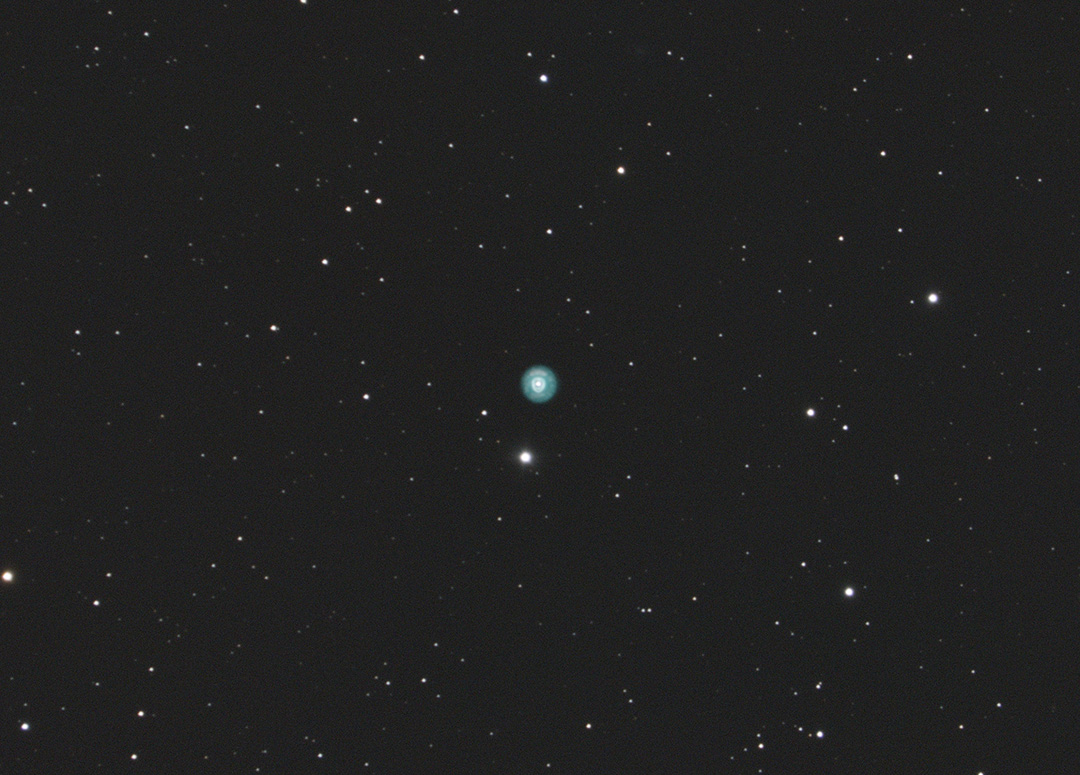
NGC-2392 (The Eskimo Nebula) is a small 0.9 arc-minute planetary nebula in Gemini.
I was really surprised by the brightness of this object.
I had to reduce my exposure times to 15 seconds to keep from blowing it out.
Click on the image for a larger view in a new window.
Details:
Location: Front yard Cary, NC
Camera: ZWO ASI294MC-Pro
Exposure: 45 x 15s gain 150
Filter: None
Scope: Celestron Edge HD800 SCT with 0.7x reducer
Mount: iOptron GEM-45
Guider: 60mm Orion finder/guider with ASI120mm-s camera
Capture software: APT
Guiding software: PHD2
Calibration frames: 13 flats and 13 darks
Processing software: PixInsight and Photoshop
Weather conditions: Windy and cold for April.
Notes: There is some star elongation probably caused by polar alignment error.
The effective focal length with the C-8 and reducer is 1480mm.
I shot another series on this nebula at 30 seconds which were over exposed and not used.
Back to Mark's Astrophotography Home
M57 The Ring Nebula in Lyra - Aug. 29, 2019
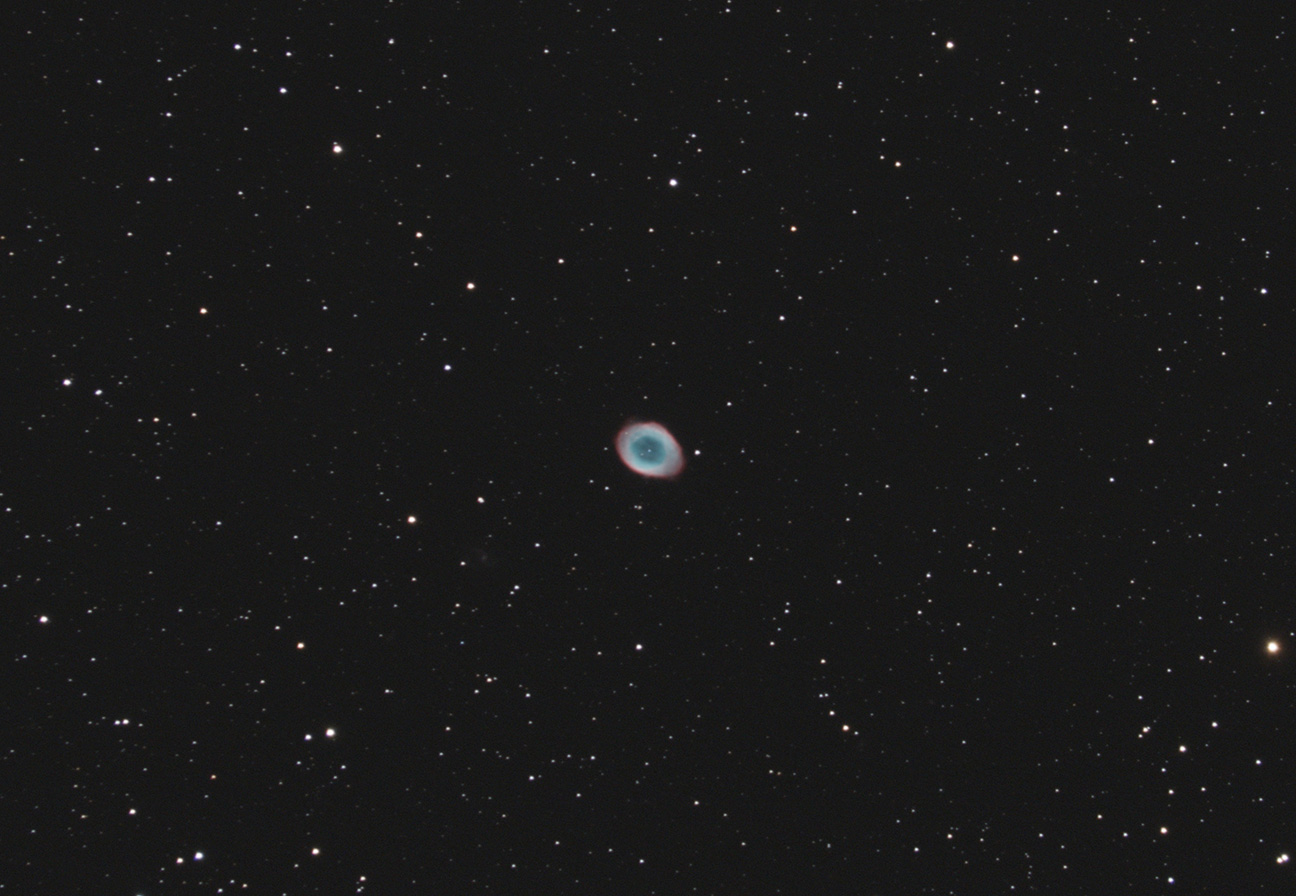
I am continuing my experiments with the new ASI294mc-pro camera to determine the camera's capabilities
with different telescopes and targets.
This is the Ring Nebula taken with my Celestron Edge HD 800 (C-8) from my front yard in Cary.
We finally had a nice run of good weather here in central NC during late August.
The previous two weeks had cloudy skies every evening.
This cropped image is made from 31 x 30s subframes at unity gain.
The C-8 was working at f/7 which is 1400mm.
I was using my Losmandy G-11 mount guided by my Orion 60mm finder/guider.
MaximDL was used to guide, APT was used for image aquisition.
The images were processed with PixInsight then taken to Photoshop CC for final touch-ups.
Click on the image for a larger view in a new window.
Back to the top of the page
Back to Mark's Astrophotography Home
M27 - Planetary Nebula in Vulpecula - July 24, 2019
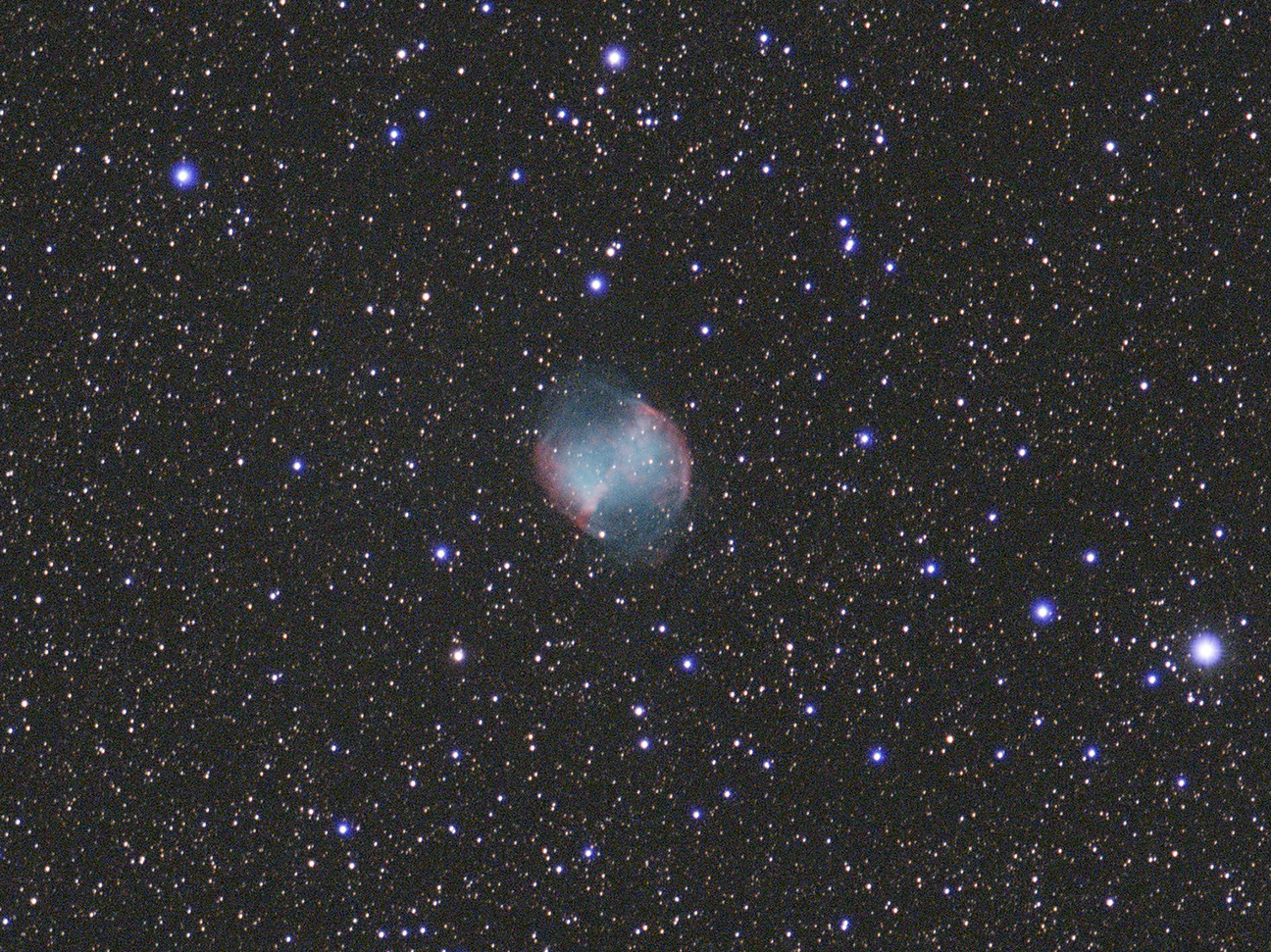
This was the second object imaged this evening, the first being M13.
I have been re-shooting some old favorites with my new ASI294MC-Pro camera from
my house to see how much better I can do with this new equipment.
Due to my suburban location, I have to keep exposures short and shoot high in the sky
to minimize the bright skies. I should have shot more sub-frames,
but this was just an experiment to see what was possible.
Weather conditions were ideal for July with cool temperatures and low humidity.
The image as shown is a crop of the central area of the frame.
The camera was connected to my TeleVue Genesis 4" f/5 refractor.
The Genesis was mounted on my Celestron AVx which was tracking but not guiding.
15 x 30s exposures were taken at unity gain. The images were acquired with Astrophotography Tool (APT).
PixInsight was used to reduce, align, combine, and stretch the data.
I used Photoshop CC to make a few changes to levels, color balance, and convert to jpg.
Click on the image for a larger view in a new window.
Back to the top of the page
Back to Mark's Astrophotography Home
Jones-Emberson 1 planetary nebula - Feb. 2, 2019
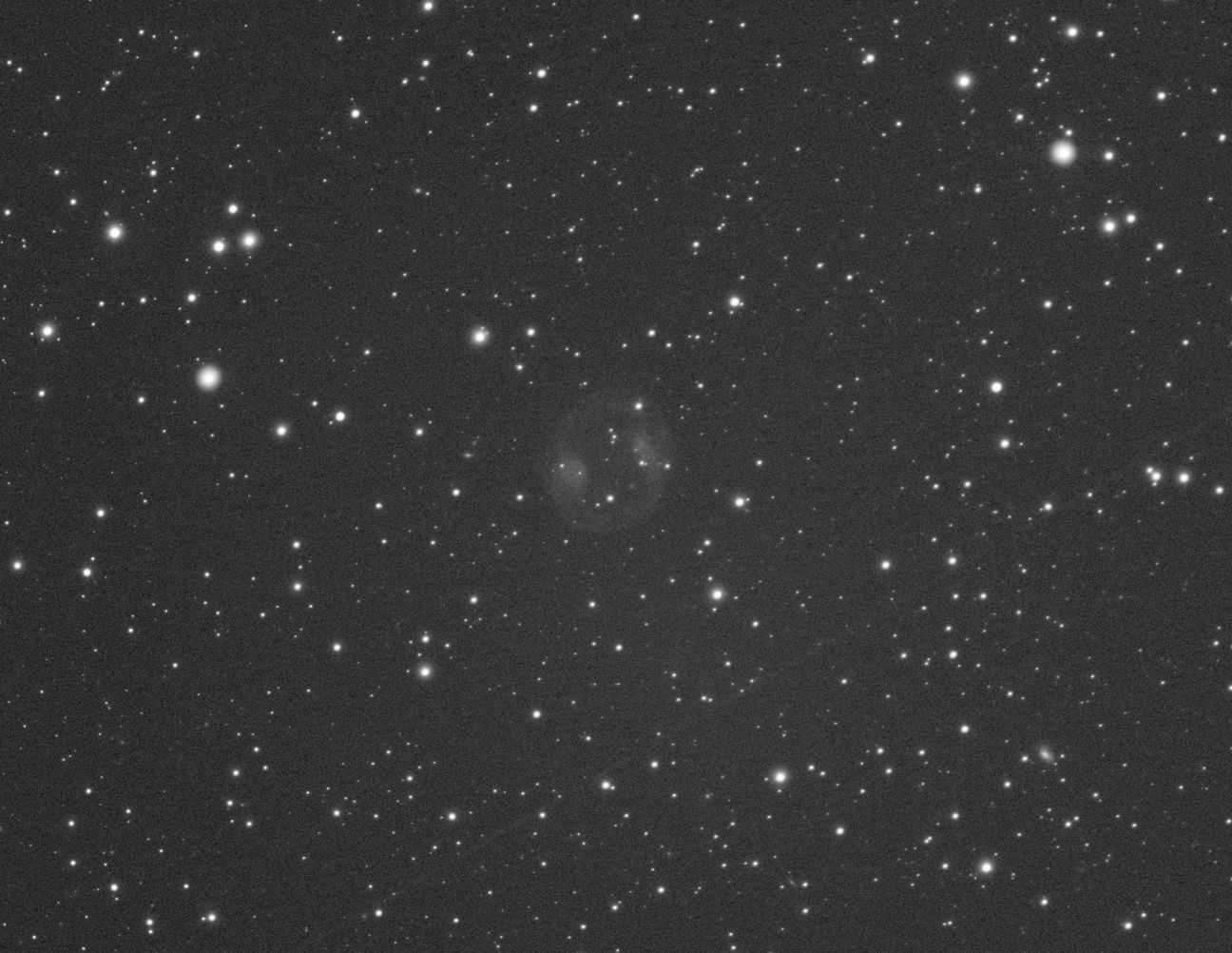
This is the faint planetary nebula Jones-Emberson 1 in the constellation Lynx.
26 x 90 second exposures were combined in ImagesPlus then cropped to produce the image shown.
Maxim DL and an ASI 1600mm-c camera running at -10c and unity gain were used to capture the image.
The Losmandy G-11 was used unguided since I managed to break the guide camera adaptor as the guide scope
slid off the Genesis 4" f/5 telescope.
Click on the image for a larger view in a new window.
Back to the top of the page
Back to Mark's Astrophotography Home
M97
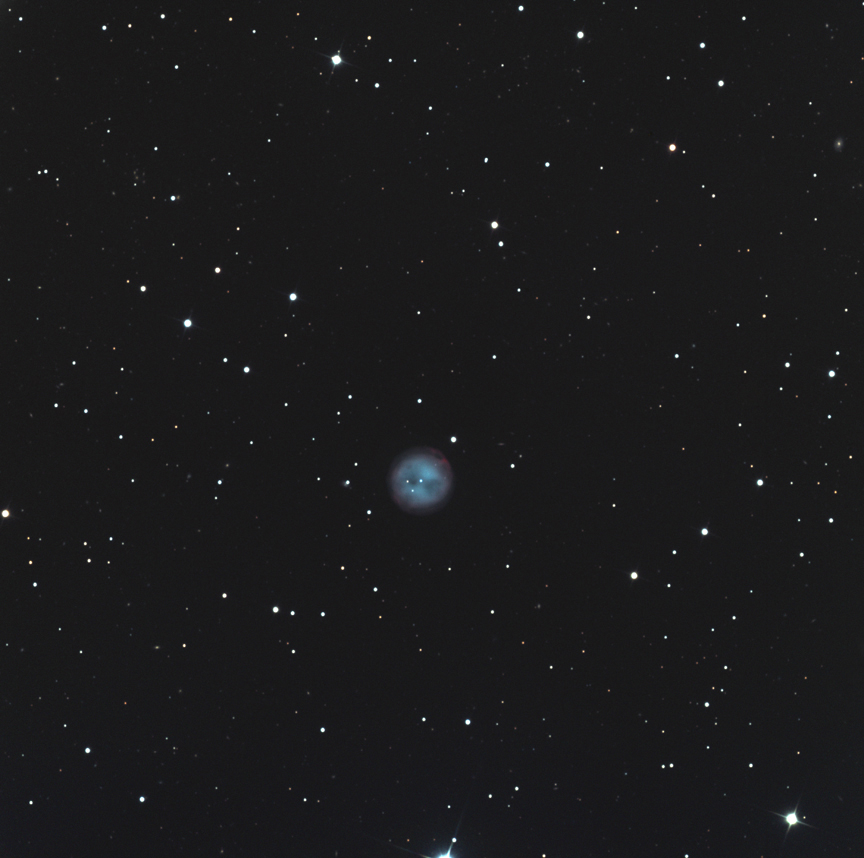
M97 - The Owl Nebula taken on June 15, 2009 using a remote telescope in New
Mexico.
My wife and children bought me points on Lightbuckets.com for my birthday and
this is my first remote imaging adventure. The telescope I used is a
12.5” f/9 Carbon Fiber Ritchey-Chretien scope built by RC Optical
Systems. The camera used was a 16.7 megapixel Apogee Alta U16M with 9 micron
pixels in a 4096x4096 array. The filters used were AstroDon LRGB. I chose to
use this scope to make my points last as long as possible while I learn how to
use their system. The bigger scope uses more points per hour.
The specs on this image are: 5 x 300 seconds Luminance binned 1x1; 5 x 300
seconds Red, Green, and Blue binned 2x2 for a total exposure time of 100
minutes. Total scope time not including darks and flats was 2.82 hours.
There was minimal processing done by me on this photo. Lightbuckets had already
dark subtracted the images, so all I had to do was flat field them, align and
median combine each color, and then make the color image - all in MaximDL 5. I
converted it to jpg in Maxim and did some final small touchups in Photoshop.
Back to the top of the page
Back to Mark's Astrophotography Home
NGC 7293

NGC 7293 The Helix Planetary Nebula in Aquarius - Taken at BigWoods on August 30 and Nov. 28, 2013 using the Genesis (4" f/5 refractor) and two different cameras. Twenty minutes of luminance was taken with the SBIG ST-402 and 45 minutes of color was taken with my Canon XTi. The two set of images were combined in Photoshop as an LRGB.
Back to the top of the pageBack to Mark's Astrophotography Home
M1

M1 - The Crab Nebula taken on Mar. 9, 2010 and Dec. 24, 2005
This is a LRGB composite taken with my SBIG ST-402 camera.
The luminance data was 9x40s using an 8" f/6 Newtonian.
The color data was taken with the 4" Genesis refractor - R: 3x120s, G: 3x120s, and B: 4x120s.
The images were aligned and resized using MaximDL.
Some color processing was done with ImagesPlus.
The color composite was created with Photoshop CS2.
Back to Mark's Astrophotography Home
M57
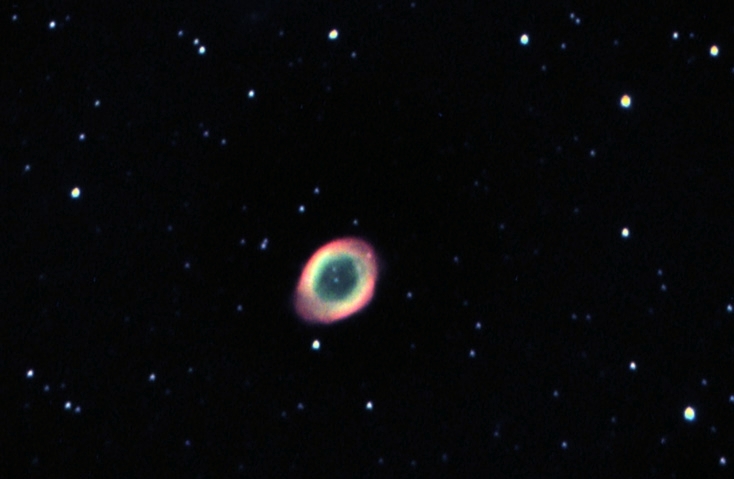
M57 - The Ring Nebula taken on June 17, 2007 at Bigwoods. This is my first attempt at M57 through the C-11. The scope was working at f/6.3 (1764mm). I was using the SBIG ST-402ME as the imaging camera, and I guided with the Stellarvue 80mm f/9.4 refractor with the SBIG ST-4 autoguider. This is an LRGB image with luminance of 5 x 1 minutes, and the red, green, and blue at 6 x 1 minutes each for a total of 23 minutes. Image capture and alignment was with CCDSoft, and some minor post processing in Photoshop CS2.
Back to the top of the pageBack to Mark's Astrophotography Home
M76 - July 31, 2017
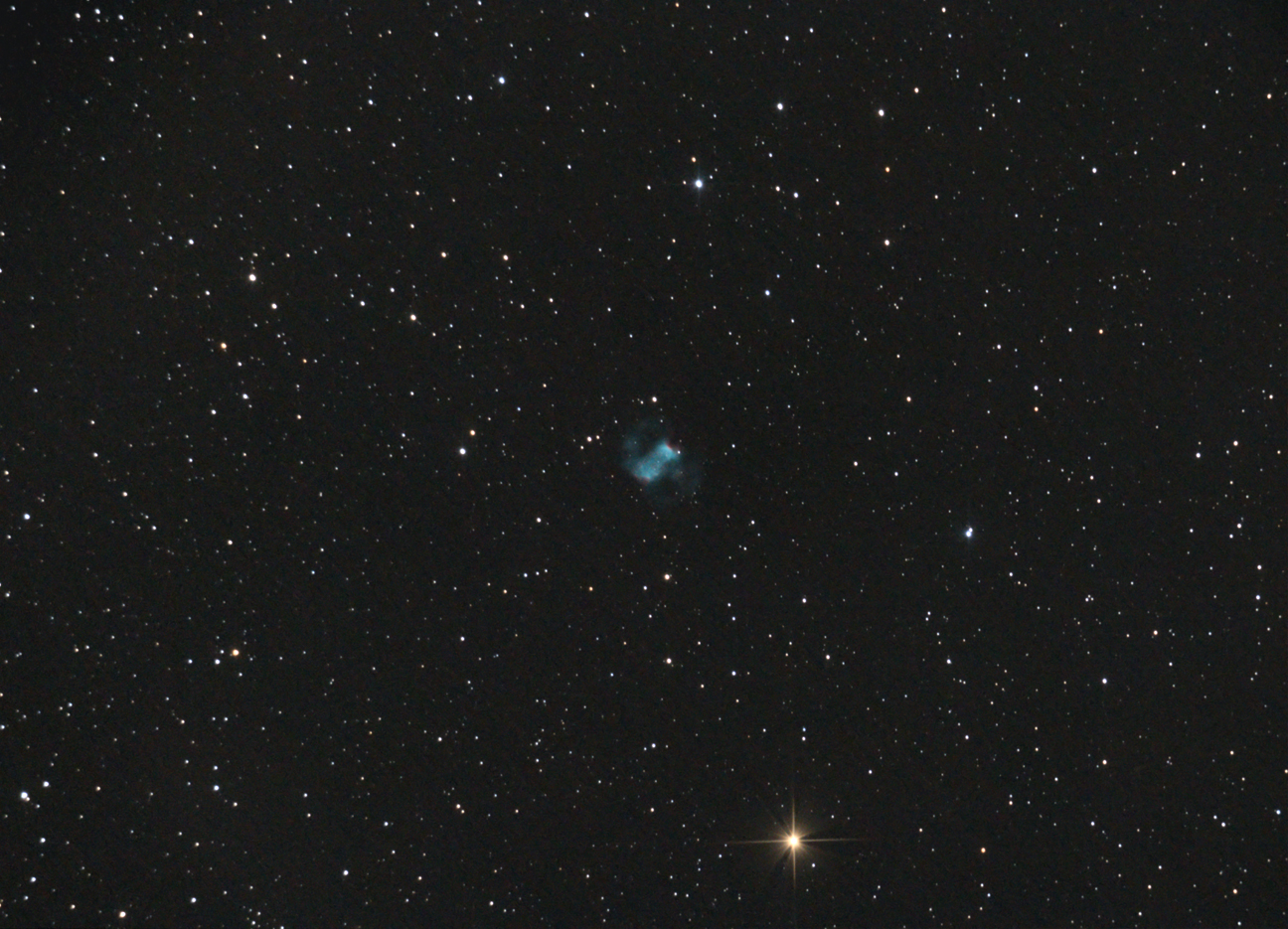
The Little Dumbell Planetary Nebula - M76.
After an early morning chase of a couple of comets in my front yard,
I decided to image M76 for the first time ever.
Twilight had already started, but I thought what have I got to lose -
M76 was pretty high up in the sky at the time.
This view is a 65% crop of the central part of the final stacked image.
I was using my un-modded Canon T3i DSLR attached to
my homemade 8" f/6.2 Newtonian mounted on my Losmandy G-11.
This view is a combination of 10 x 30 seconds and 15 x 45 seconds light frames all unguided.
11 dark frames were applied.
The image was processed in ImagesPlus and Photoshop CS2 (GradientXTerminator).
A cold front had passed through a day ago
leaving clear skies and a temperature in the upper 50s by dawn!
Pretty incredible for July in North Carolina.
Click on the image for a larger view in a new window.
Back to Mark's Astrophotography Home
NGC 7662 The Blue Snowball - Sept. 27, 2017
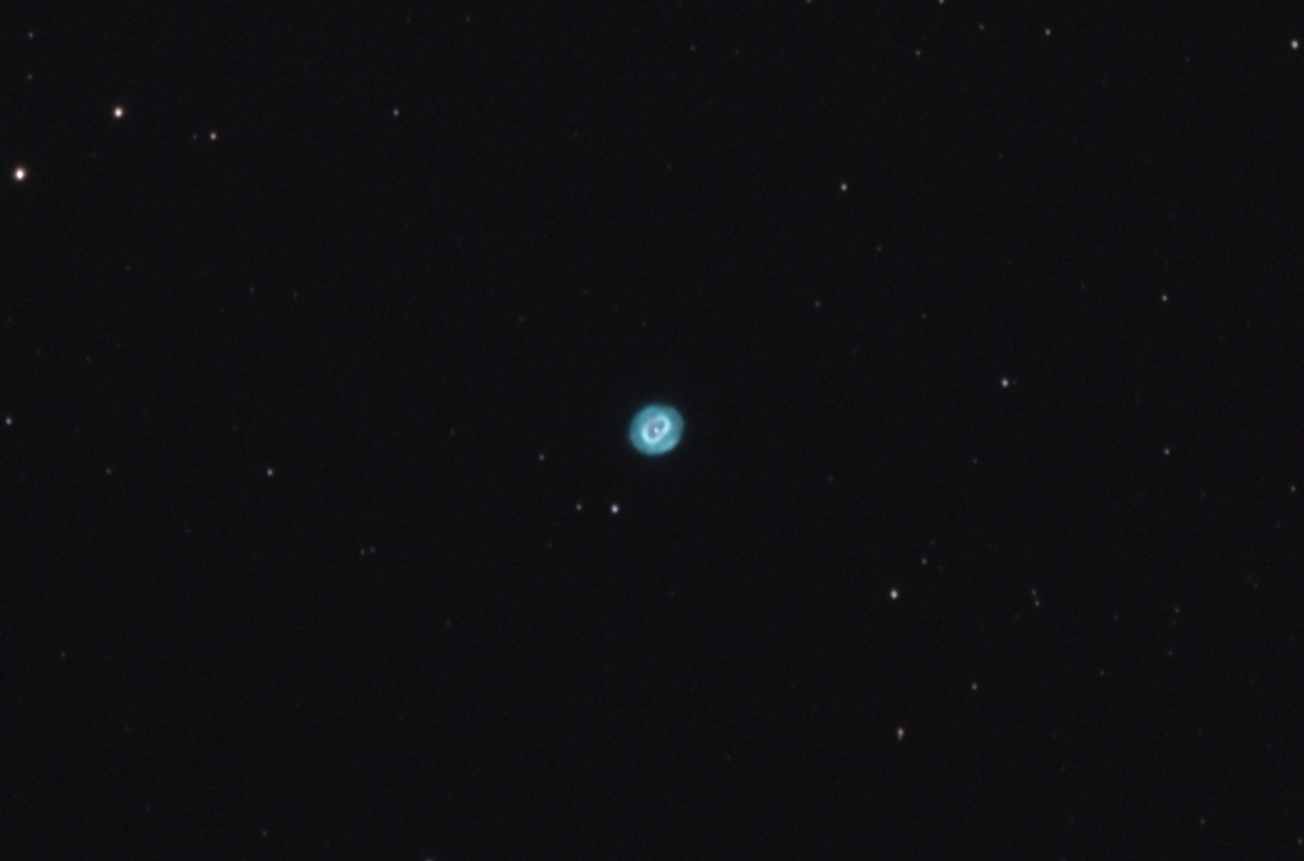
NGC 7662 is a bright, bluish, round 36 arc-second planetary nebula in Andromeda.
Due to it's small size, it is a challenging target photographically.
Click on the image to see the 100% scale version of the photo in a new window.
North is to the left in the image.
The best 22 exposures - 12 @ 45s and 10 @ 60s for a total of 19 minutes were used in this image.
The data was captured using BackyardEOS with my Canon XTi
then reduced and sigma median combined in ImagesPlus.
I had to throw out about 1/3 of the frames I shot due to elongated stars caused by balance problems.
I used Photoshop CS2 levels and curves to stretch the image.
Then the data was re-imported into ImagesPlus where star size reduction,
wavelet sharpening, and color balance corrections were made.
Then the image was put through MaximDL's local adaptive filter to sharpen the nebula.
Finally, Photoshop was used to layer in the Maxim changes with the ImagesPlus version to produce the final image.
The image has been cropped to the central 35% of the original.
The image was captured in my driveway in Cary, NC.
I was using my Celestron Edge HD 800 SCT @ f/10 (2032 mm) and my Canon XTi at ISO 1600.
The scope was mounted on my Losmandy G-11 mount.
I was using my old Brandon 80 mm f/4.8 refractor and ATIK 16IC camera to guide.
The C-8 and the Brandon were on a side by side plate.
Back to the top of the page
Back to Mark's Astrophotography Home